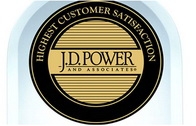Advertisement
J.D. Power Finds Quicken Loans Tops in Servicing

Mortgage servicers are making substantial progress in improving the overall customer borrowing experience—specifically for “at-risk” customers—with technology helping to simplify and streamline the experience, according to the J.D. Power 2014 U.S. Primary Mortgage Servicer Satisfaction Study. The Study measures satisfaction in four factors of the mortgage servicing experience: Billing and payment process; escrow account administration; Web site; and phone contact.
Quicken Loans was ranked highest in customer satisfaction among home loan servicers included in the Study by J.D. Power with a score of 835. The award is Quicken Loans’ first for mortgage servicing. This recognition comes in the company’s first year of being eligible for the honor. Chase Mortgage ranks second with a score of 782, followed by Regions Mortgage at 777.
Overall satisfaction averages 754 (on a 1,000-point scale) in 2014, up from 733 in 2013. Improvements in satisfaction are even more pronounced among at-risk customers—those who are currently behind with mortgage payments or concerned about keeping current with their payments during the next year—increasing by 42 points year over year to 703 in 2014.
“Satisfaction is improving, specifically among those customers having a hard time paying their bills, primarily because lenders are improving the experience by making it easier for them to use the website or their smartphone to make payments, resolve problems or get answers to their questions,” said Craig Martin, director of the mortgage practice at J.D. Power. “As more consumers use smartphones and tablets and younger tech-savvy borrowers begin to buy homes, the desire to use online and mobile channels will inevitably increase.”
The study finds that customers who have concerns about making payments closely monitor their account. This at-risk group uses the mobile channel to review statements more than twice as often as the industry average (eight percent vs. three percent, respectively). Those using a mobile device to review statements on their mortgage servicer’s Web site do so much more frequently as well, an average of 28 times in the past 12 months, compared with an industry average of 13 times.
Martin noted that the ever-increasing use of technology may require mortgage lenders to reconsider their current approach and message to different segments. For example, at-risk customers most frequently use their lender’s website to view monthly billing information, while “performing low-risk” customers—those with good or excellent credit and have not made a late payment—most often use the site to review their payment/transaction history. Notably, customers with poor credit find website features harder to find more often than those with better credit.
“Since the mortgage crisis of 2008, servicers have made substantial progress in more effectively communicating with consumers, including increasing the use of guides and technology to help better educate customers and keep them informed,” said Martin. “While many new regulations have recently gone into place standardizing certain elements of the experience, during the past few years some servicers have begun using online versions of such tools as escrow guides to educate their borrowers and create a better experience for them.”
One of the keys to high satisfaction starts at the beginning of the relationship by promoting consumer awareness and understanding of the mortgage servicing process. Satisfaction is highest among customers who receive personalized contacts: 832 when customers receive a phone call and 819 when they receive an email. As the communication becomes less personal, the impact declines, with welcome packets generating an average overall satisfaction score of 808 and an introduction letter generating a score of 762. Among the seven percent of customers who do not receive any communication from their lender, satisfaction drops to 640.
Among the various types of communication channels/methods provided to customers, the two most common forms are traditional paper statements (53 percent) and online statements (34 percent). Despite being the most common, overall satisfaction is 39 points lower among customers who receive a paper statement (737) than among those who receive an online statement (776).
On average, brand image ratings have significantly improved in 2014, primarily driven by the perception that mortgage lenders are more customer-driven, compared with 2013 (4.26 vs. 4.09, respectively, on a seven-point scale). Further, lenders are perceived as significantly less innovative than conventional, compared with 2013 (4.32 vs. 4.48, respectively), potentially pointing to rising expectations among consumers.
About the author





